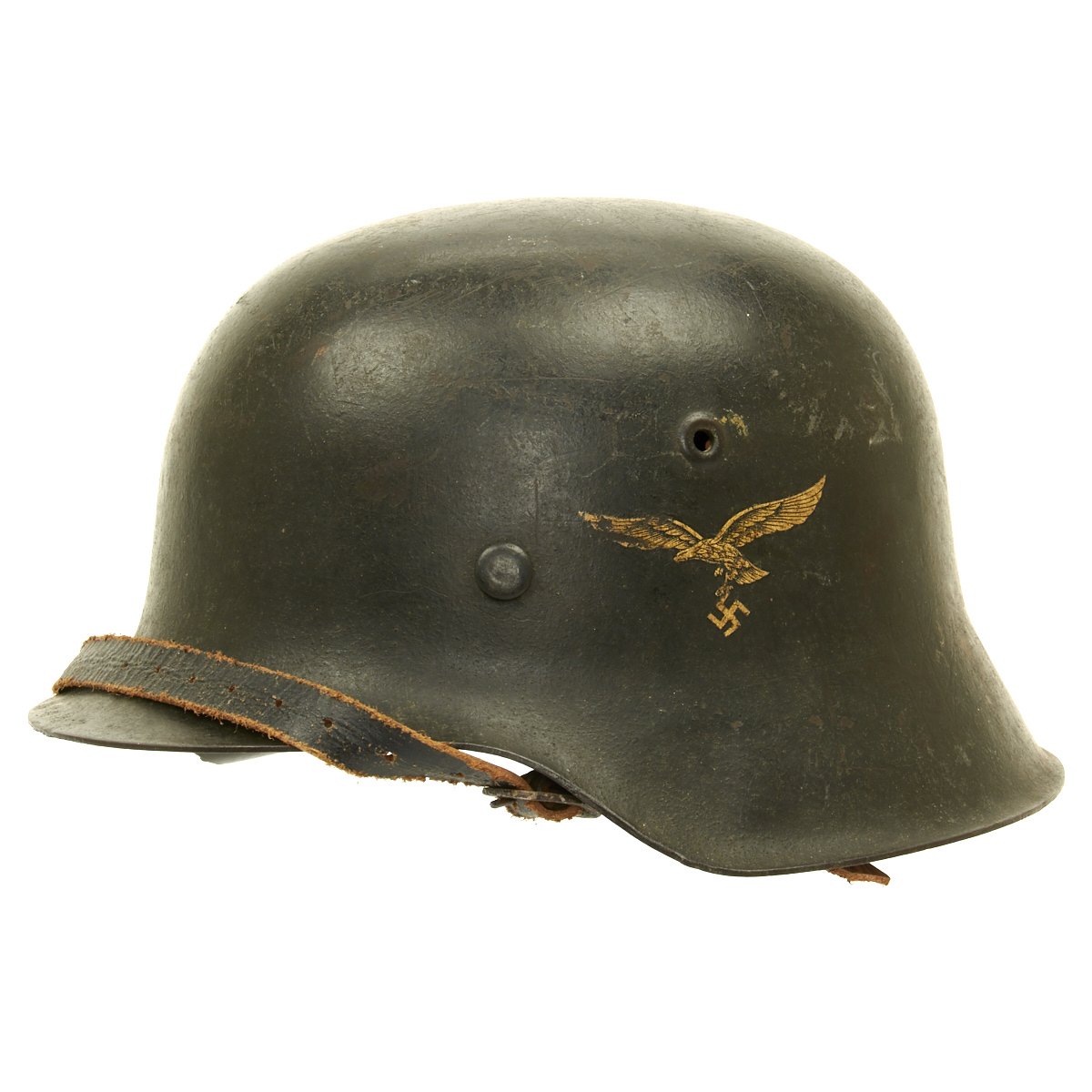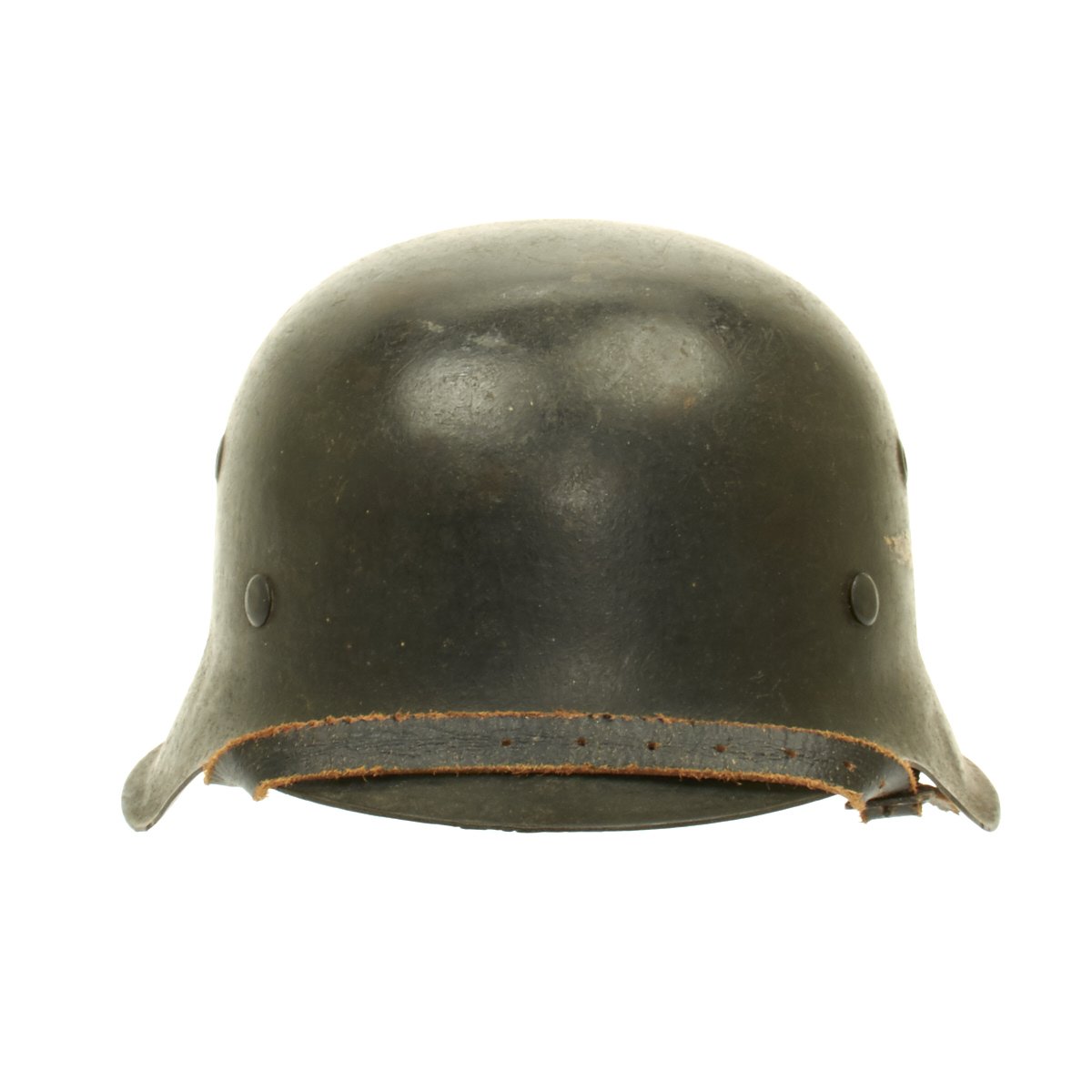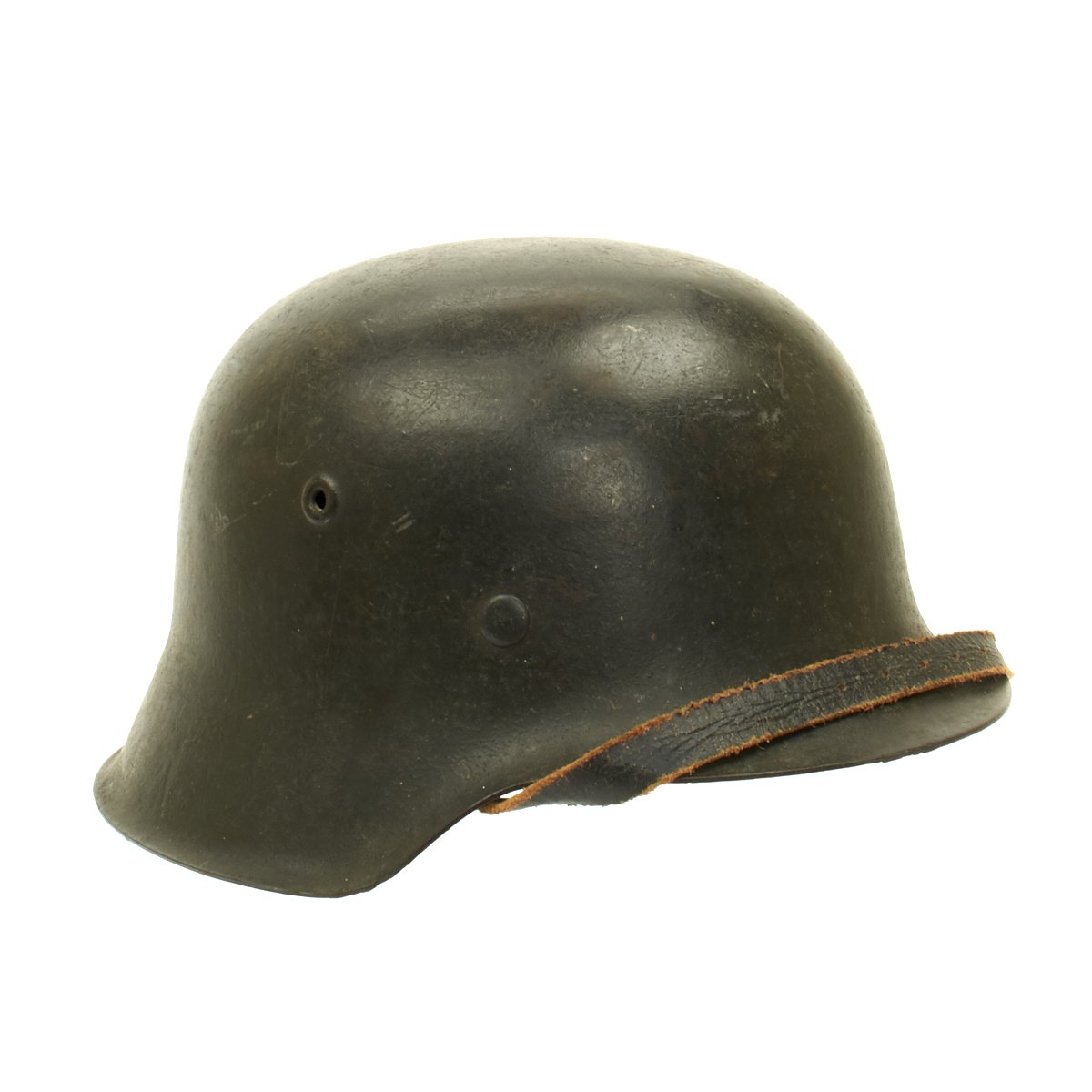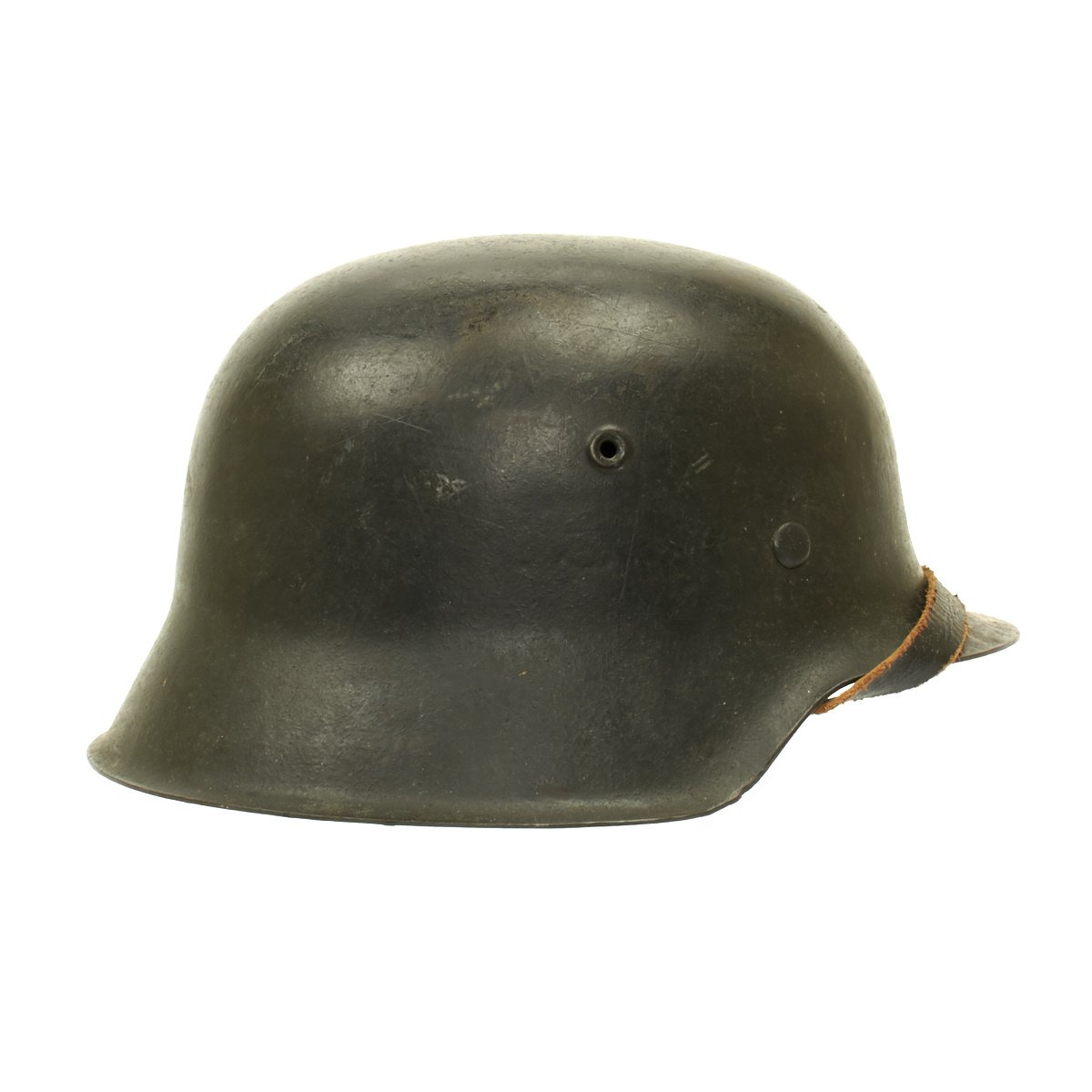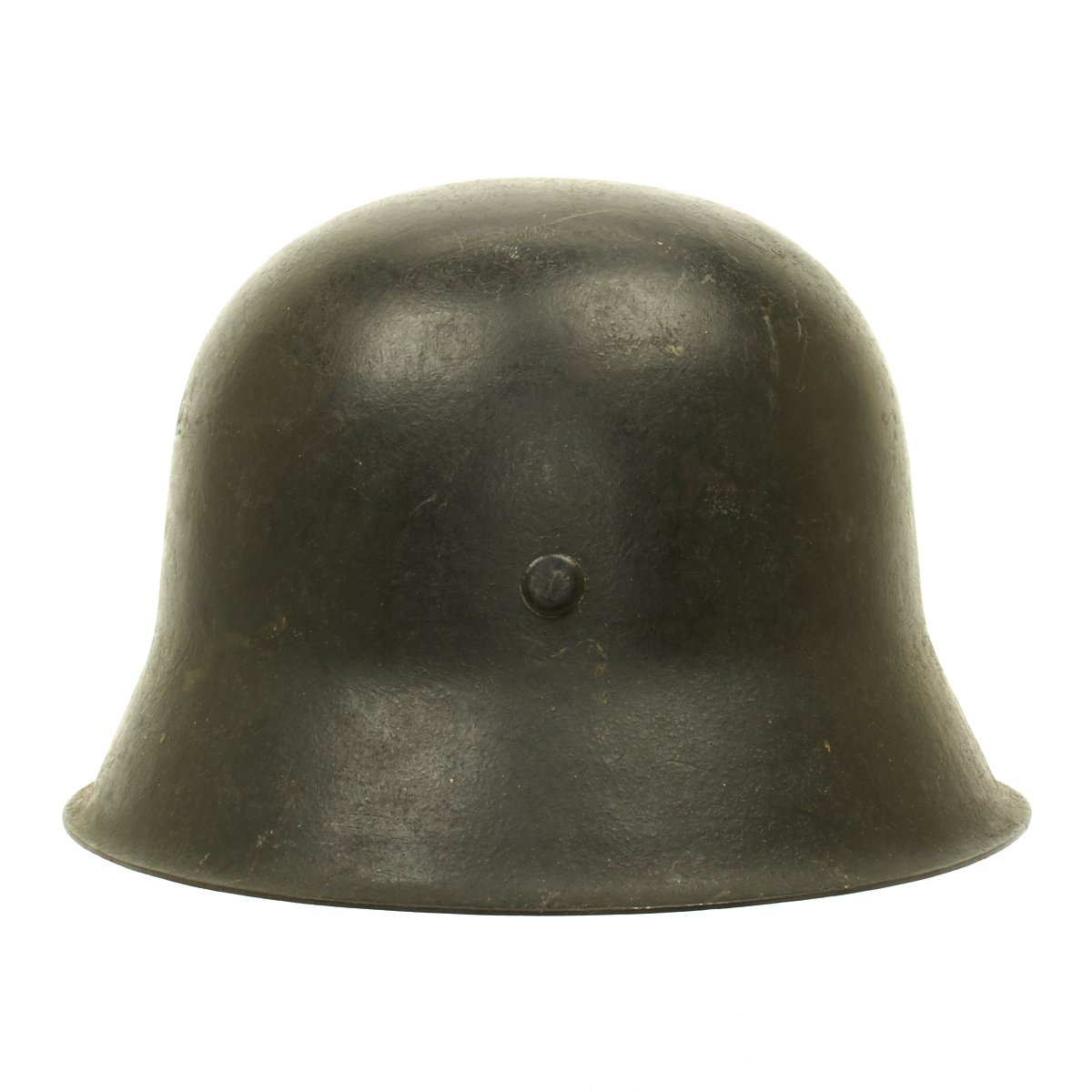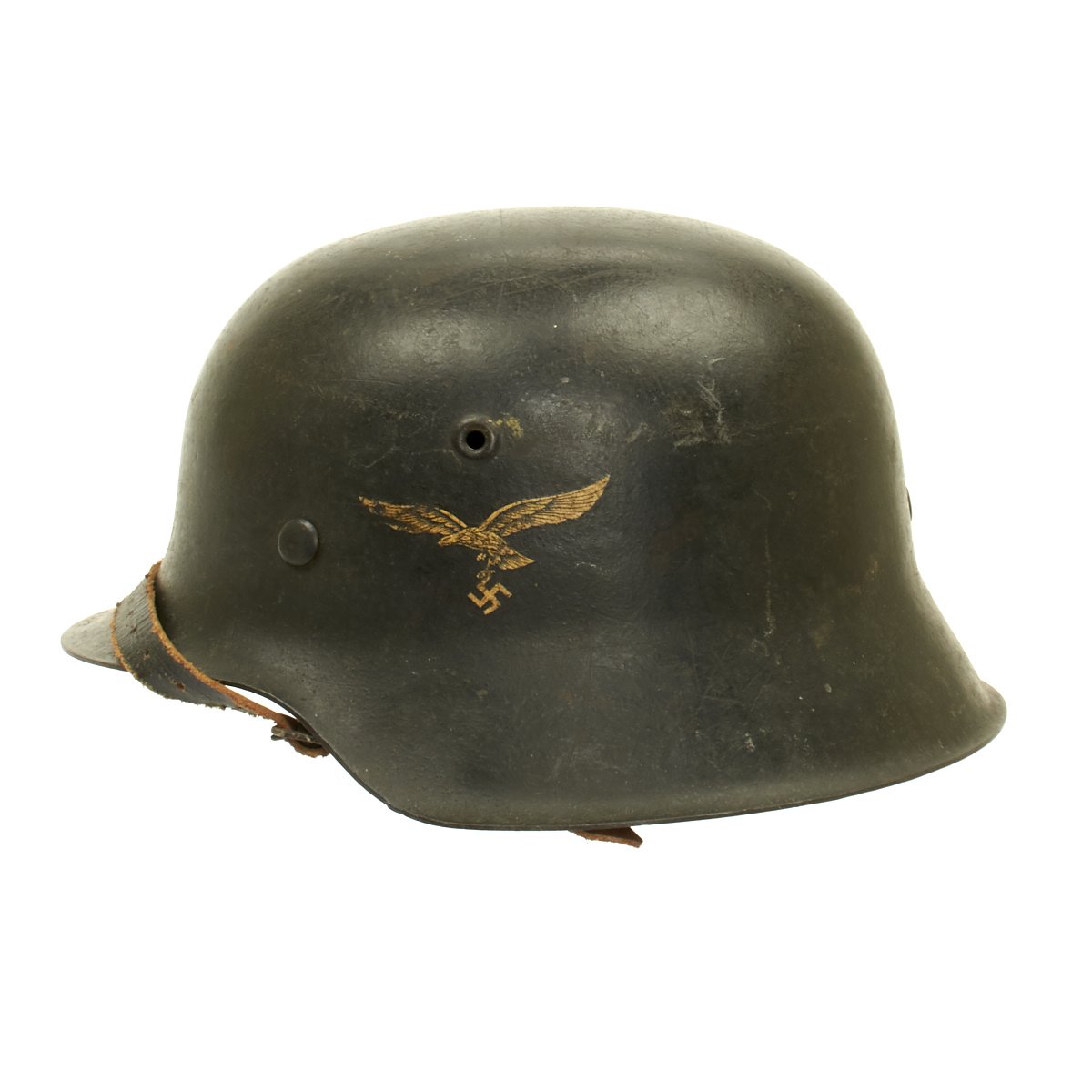Original German WWII Luftwaffe M42 Single Decal Helmet – ET64 Original Items
$ 1.095,00 $ 273,75
Original Item: Only One Available. The first “modern” steel helmets were introduced by the French army in early 1915 and were shortly followed by the British army later that year. With plans on the drawing board, experimental helmets in the field, (“Gaede” helmet), and some captured French and British helmets the German army began tests for their own steel helmet at the Kummersdorf Proving Grounds in November, and in the field in December 1915. An acceptable pattern was developed and approved and production began at Eisen-und Hüttenwerke, AG Thale/Harz, (Iron and Foundry Works), in the spring of 1916.
These first modern M16 helmets evolved into the M18 helmets by the end of WWI. The M16 and M18 helmets remained in usage through-out the Weimar Reichswehr, (National Defence Force, Circa 1919-1933), era and on into the early years of the Third Reich until the development of the smaller, lighter M35 style helmet in June 1935.
In an effort to reduced construction time and labor costs minor modifications were introduced in March 1940 resulting in the M40 helmet. Further construction modifications were undertaken in August 1942 resulting in the M42 helmet.
This example of a Luftwaffe M42 helmet retains much original paint, but shows wear and use. The left side of the helmet has a second pattern, (Circa 1936/1937-1945), black detailed, silvery/white, Luftwaffe eagle decal, clutching a canted swas in one talon. The decal is retained 80%. All three liner retaining pins are intact. The interior of the helmet still has an aged Luftwaffe blue/grey painted finish, and does not appear to have been repainted.
The reverse, interior, neck guard apron is serial number stamped, “1879” and the interior, left side, apron has the faint, stamped manufacturer’s code and size, ET64 indicating it was manufactured by Eisenhuttenwerk AG, Thale Harz. Size 64 is a nice large size that can accommodate liners from 56cm to 58cm or US 7 to 7 1/4. Size 64 shells are harder to find and are therefore more valuable to a collector.
The helmet still has its correct M31 liner with all 8 of its fingers intact. The liner still has its original leather size adjustment string, and while somewhat dry, does not have any major tears. There is discoloration from wear and age. The liner band is the galvanized steel type seen on later war helmets, and is marked 64 n.A / 57 behind the left chin strap attachment, indicating a size 57 liner to fit a size 64 shell. Behind the right chin strap attachment the band is marked:
B. & C.
LITZMANNSTADT
1942
This liner was made by Biedermann & Czarnikow, a German company who moved operations to Łódź in occupied Poland to take advantage of the slave labor in the ghetto located there. NSDAP authorities renamed Łódź to Litzmannstadt in honor of the German General Karl Litzmann who had captured the city in the previous World War.
Original chinstrap is included and intact, with expected wear from age and use. The leather is a bit dry, and the finish is somewhat worn. The end of the chinstrap is marked D.R.P. 1941, for D.R.P. SCHUBERTH-WERK K.-G.
Overall a very nice totally correct 100% genuine Luftwaffe helmet!
The Luftwaffe pattern national eagle was originally introduced for wear by Fliegerschaft, (Pilot Base), personnel of the DLV, Deutscher Luftsportsverband, (German Air Sports Association), the clandestine, civilian, forerunner of the Luftwaffe on August 18TH 1934, and adopted for wear by the Luftwaffe on March 1ST 1935 along with the national tri-color shield for wear on the helmet.
The first pattern national eagle was utilized until a modified second pattern eagle was introduced in late 1936 or early 1937. Regulations of June 12TH 1940 discontinued the use of the national tri-color decal and further regulations of August 28TH 1943 abolished the national eagle decal and dictated that it was also to be removed from all helmets although the directives were not completely adhered to.
Fast Shipping with Professional Packaging
Thanks to our longstanding association with UPS FedEx DHL, and other major international carriers, we are able to provide a range of shipping options. Our warehouse staff is expertly trained and will wrap your products according to our exact and precise specifications. Prior to shipping, your goods will be thoroughly examined and securely secured. We ship to thousands clients each day across multiple countries. This shows how we're dedicated to be the largest retailer on the internet. Warehouses and distribution centres can be located throughout Europe as well as the USA.
Note: Orders with more than one item will be assigned a processing date depending on the item.
Before shipping before shipping, we'll conduct a thorough inspection of the items you have ordered. Today, the majority of orders will be delivered within 48 hours. The delivery time will be between 3-7 days.
Returns
The stock is dynamic and we cannot completely manage it because multiple stakeholders are involved, including our factory and warehouse. So the actual stock may alter at any time. It's possible that you may not receive your order once the order has been made.
Our policy is valid for a period of 30 days. If you don't receive the product within 30 days, we are not able to issue a refund or an exchange.
You can only return an item if it is unused and in the same state as the day you received it. You must have the item in its original packaging.
Related products
Uncategorized
Band of Brothers ORIGINAL GERMAN WWII Le. F.H. 18 10.5cm ARTILLERY PIECE Original Items
Uncategorized
Uncategorized
Uncategorized
Uncategorized
Uncategorized
Uncategorized
Uncategorized
Uncategorized
Uncategorized
Australian WWII Owen MK1 Machine Carbine SMG Custom Fabricated Replica with Sling Original Items
Uncategorized
Uncategorized
Uncategorized
Uncategorized
Uncategorized
Uncategorized
Uncategorized
Armoured Fighting Vehicles of the World: AFVs of World War One (Hardcover Book) New Made Items
Uncategorized
